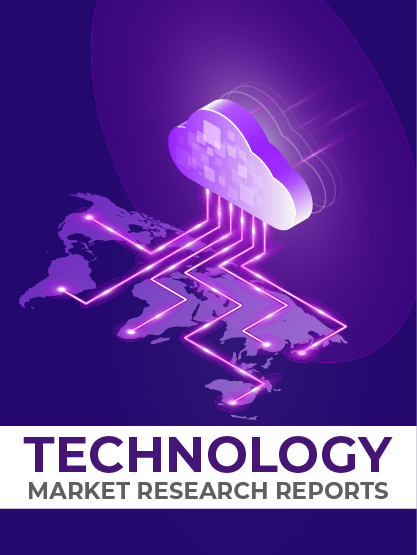
-
Report ID 138117 -
Published Date June 2023 -
Delivery Format PDF/PPT/Word -
Editor's Rating
-
Report Details
Report Overview
The Generative AI in Agriculture Market is projected to reach a value of approximately USD 1,083.9 million by 2032, exhibiting a substantial growth rate of 24.8% CAGR during the forecast period of 2023 to 2032, compared to its valuation of USD 125 million in 2022. This growth will be driven by the increasing use of generative AI in a variety of agricultural applications, such as:
- Crop yield prediction: Generative AI can be used to predict crop yields based on factors such as weather, soil conditions, and crop type. This information can be used to help farmers make better decisions about planting, irrigation, and fertilization.
- Disease detection: Generative AI can be used to detect diseases in crops early on, before they cause significant damage. This can help farmers to prevent crop losses and improve yields.
- Weed control: Generative AI can be used to identify and target weeds, helping farmers to reduce the use of herbicides. This can be beneficial for the environment and for the health of farmers.
- Precision farming: Generative AI can be used to create detailed maps of agricultural fields, which can be used to optimize the application of fertilizers, pesticides, and water. This can help farmers to improve yields and reduce costs.
Key Takeaways
- The Generative AI in Agriculture market is experiencing significant growth, driven by the adoption of AI technologies to enhance agricultural practices.
- AI-powered systems improve crop monitoring and management, enabling farmers to make data-driven decisions and optimize resource allocation.
- The market offers opportunities for the development of precision agriculture solutions, autonomous farming systems, and smart crop protection techniques.
- Integration of Generative AI in Agriculture systems leads to increased crop yields, reduced input costs, and improved sustainability in farming practices.
- Ethical considerations, data privacy, and security concerns are important factors that need to be addressed to ensure the responsible use of Generative AI in Agriculture.
Top Key Players
- IBM Corp.
- Microsoft Corp.
- John Deere
- The Climate Corporation (a subsidiary of Bayer)
- Ag Leader Technology
- Trimble Inc.
- Prospera Technologies
- Descartes Labs
- Taranis
- Granular (a Corteva Agriscience company)
- Other Key Players
Regional Landscape
The Generative AI in Agriculture market exhibits a global presence, with key regions including:
- North America: Leading market due to advanced agricultural technologies, adoption of precision farming, and strong presence of agtech companies.
- Europe: Growing adoption of AI in agriculture, driven by sustainable farming practices, government initiatives, and increasing investments in smart agriculture.
- Asia Pacific: Rapidly expanding market due to rising population, increasing demand for food, and the need for efficient agricultural practices.
- Latin America: Adoption of AI technologies in agriculture to improve productivity, reduce environmental impact, and address agricultural challenges.
- Middle East and Africa: Growing interest in AI-powered agriculture solutions to enhance food production in arid and resource-constrained regions.
Market Dynamics
Drivers
The growth of the generative AI market in agriculture is being driven by a number of factors, including:
- The increasing demand for sustainable agriculture.
- The increasing availability of data.
- The decreasing cost of computing power.
Restraints
The growth of the generative AI market in agriculture is being restrained by a number of factors, including:
- The high cost of developing and deploying generative AI solutions.
- The lack of skilled personnel with the knowledge and experience to use generative AI in agriculture.
- The regulatory challenges associated with the use of generative AI in agriculture.
Opportunities
The generative AI market in agriculture offers a number of opportunities, including:
- The development of new crop varieties that are more resistant to pests and diseases.
- The improvement of the efficiency of irrigation systems.
- The development of new methods of pest control.
- The creation of personalized farming plans for each individual farmer.
- The creation of virtual farms that can be used to train farmers and to test new agricultural practices.
Challenges
The generative AI market in agriculture faces a number of challenges, including:
- The high cost of developing and deploying generative AI solutions.
- The lack of skilled personnel with the knowledge and experience to use generative AI in agriculture.
- The regulatory challenges associated with the use of generative AI in agriculture.
Market Segments
Based on Crop Type
- Wheat
- Rice
- Corn
- Vegetables
- Other Crop Types
Based on Application
- Precision Farming
- Livestock Management
- Crop Management
- Soil Analysis
- Other Applications
Based on Technology
- Deep Learning
- Computer Vision
- Machine Learning
- Natural Language Processing
- Robotics
Based on End-User Industry
- Farmers
- Agriculture Technology Companies
- Agriculture Consultants
- Government Agencies
- Research Institutions
Key Regions and Countries
North America
- US
- Canada
- Mexico
Western Europe
- Germany
- France
- The UK
- Spain
- Italy
- Portugal
- Ireland
- Austria
- Switzerland
- Benelux
- Nordic
- Rest of Western Europe
Eastern Europe
- Russia
- Poland
- The Czech Republic
- Greece
- Rest of Eastern Europe
APAC
- China
- Japan
- South Korea
- India
- Australia & New Zealand
- Indonesia
- Malaysia
- Philippines
- Singapore
- Thailand
- Vietnam
- Rest of APAC
Latin America
- Brazil
- Colombia
- Chile
- Argentina
- Costa Rica
- Rest of Latin America
Middle East & Africa
- Algeria
- Egypt
- Israel
- Kuwait
- Nigeria
- Saudi Arabia
- South Africa
- Turkey
- United Arab Emirates
- Rest of MEA
FAQs
1. What is Generative AI in Agriculture?
Generative AI in Agriculture refers to the application of generative artificial intelligence techniques in the agricultural sector. It involves the use of AI algorithms and models to optimize agricultural processes such as crop monitoring, yield prediction, pest detection, irrigation management, and precision farming.
2. What are the key benefits of Generative AI in Agriculture?
- Generative AI in Agriculture offers several benefits, including:
- Enhanced crop monitoring and management through data-driven insights.
- Optimized resource allocation for improved efficiency and sustainability.
- Early detection and prevention of crop diseases and pests.
- Increased crop yields and improved quality.
- Precision farming techniques for targeted application of resources.
3. How does Generative AI improve crop monitoring and management?
Generative AI enables the analysis of large volumes of agricultural data, including satellite imagery, weather patterns, soil conditions, and crop health metrics. This data is processed using AI algorithms to provide real-time insights into crop conditions, allowing farmers to make informed decisions regarding irrigation, fertilization, and pest control. By continuously monitoring crops and adjusting practices accordingly, farmers can optimize yield and resource usage.
4. Can Generative AI help in reducing environmental impact in agriculture?
Yes, Generative AI can play a significant role in reducing the environmental impact of agriculture. By optimizing resource allocation, such as water and fertilizer usage, farmers can minimize waste and reduce their ecological footprint. Additionally, early detection and targeted treatment of crop diseases and pests can reduce the need for chemical interventions, promoting sustainable and environmentally-friendly farming practices.
5. How does Generative AI contribute to precision farming?
Generative AI enables precision farming by combining real-time data and AI algorithms to precisely manage farming operations. By integrating technologies like IoT sensors, drones, and satellite imagery, Generative AI analyzes data on soil composition, moisture levels, temperature, and crop health. This information is then used to tailor farming practices, such as irrigation, fertilization, and harvesting, to specific areas or even individual plants, optimizing yields and resource usage.
Future Trends in the Market
The future trends in the generative AI market in agriculture are expected to be driven by the increasing demand for sustainable agriculture, the increasing availability of data, and the decreasing cost of computing power. The market is also expected to be driven by the growing demand for personalized farming plans and the increasing use of virtual farms.
-
Table Of Content
Research Insights & Deliverables
 Development and Future Forecast
Development and Future Forecast Competitive benchmarking
Competitive benchmarking Company Revenue Statistics
Company Revenue Statistics Rising Regional Opportunities
Rising Regional Opportunities Technology Trends and Dynamics
Technology Trends and Dynamics Technology Assessment
Technology Assessment
-
Inquiry Before Buying
Research Insights & Deliverables
 Development and Future Forecast
Development and Future Forecast Competitive benchmarking
Competitive benchmarking Company Revenue Statistics
Company Revenue Statistics Rising Regional Opportunities
Rising Regional Opportunities Technology Trends and Dynamics
Technology Trends and Dynamics Technology Assessment
Technology Assessment
-
Request Sample
Research Insights & Deliverables
 Development and Future Forecast
Development and Future Forecast Competitive benchmarking
Competitive benchmarking Company Revenue Statistics
Company Revenue Statistics Rising Regional Opportunities
Rising Regional Opportunities Technology Trends and Dynamics
Technology Trends and Dynamics Technology Assessment
Technology Assessment














